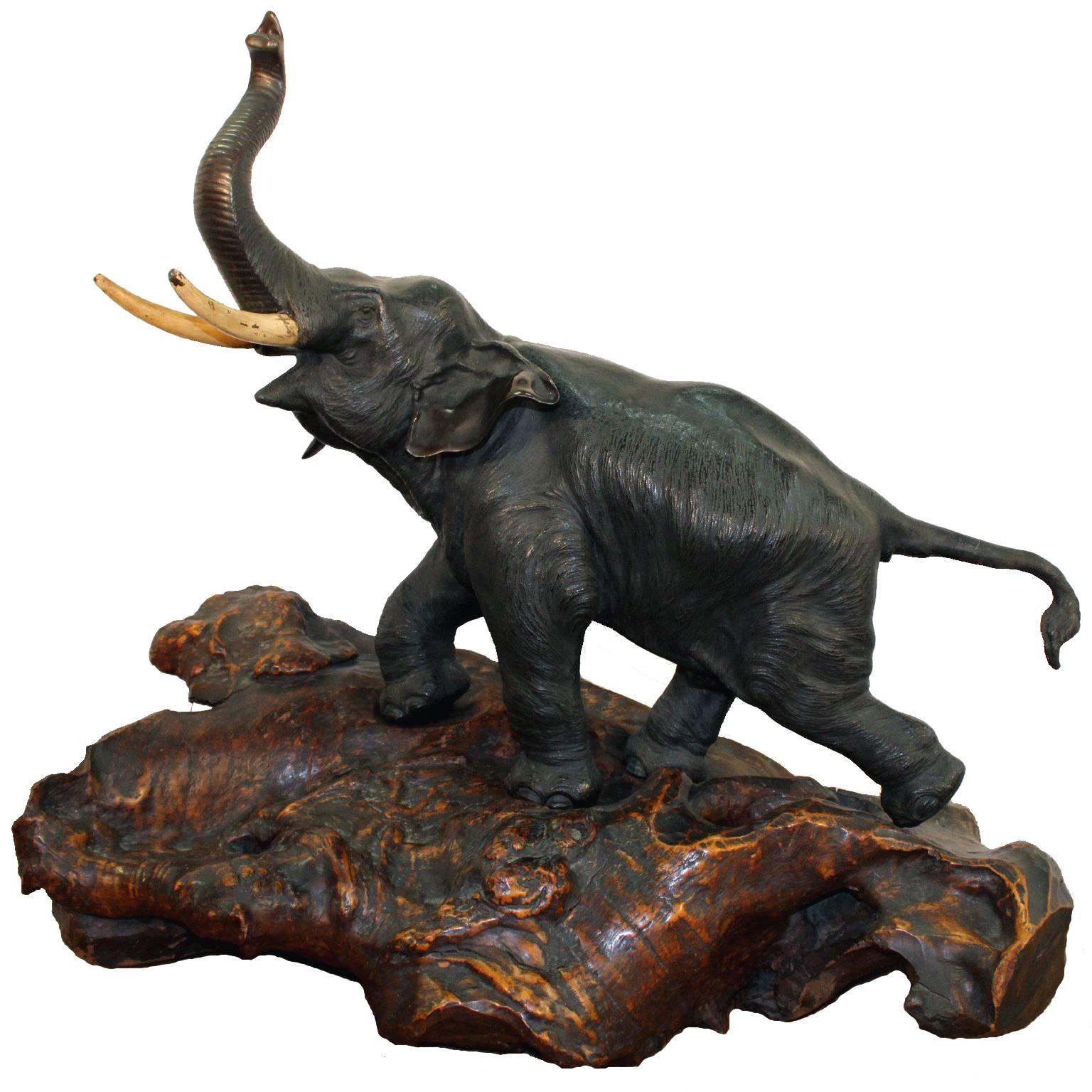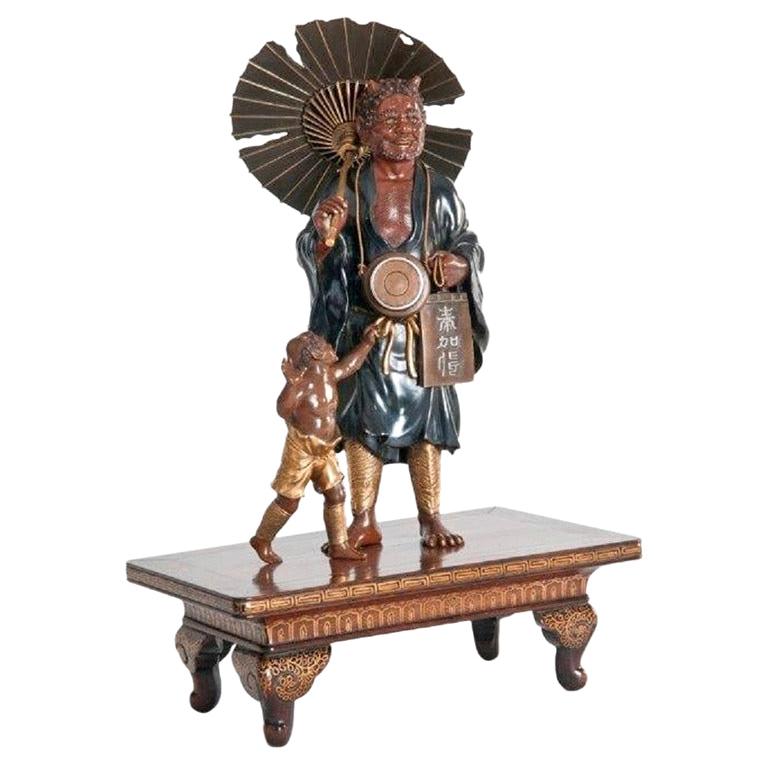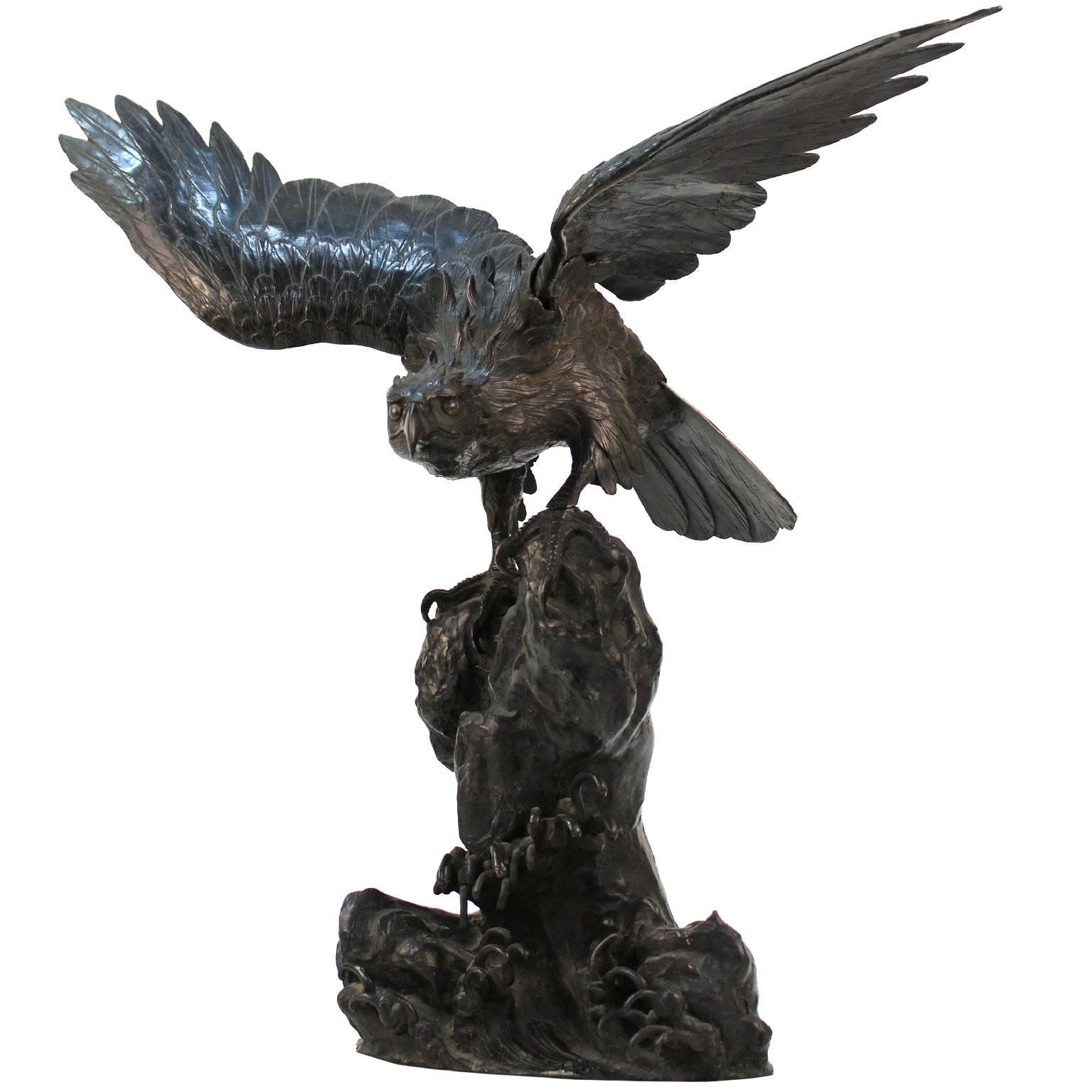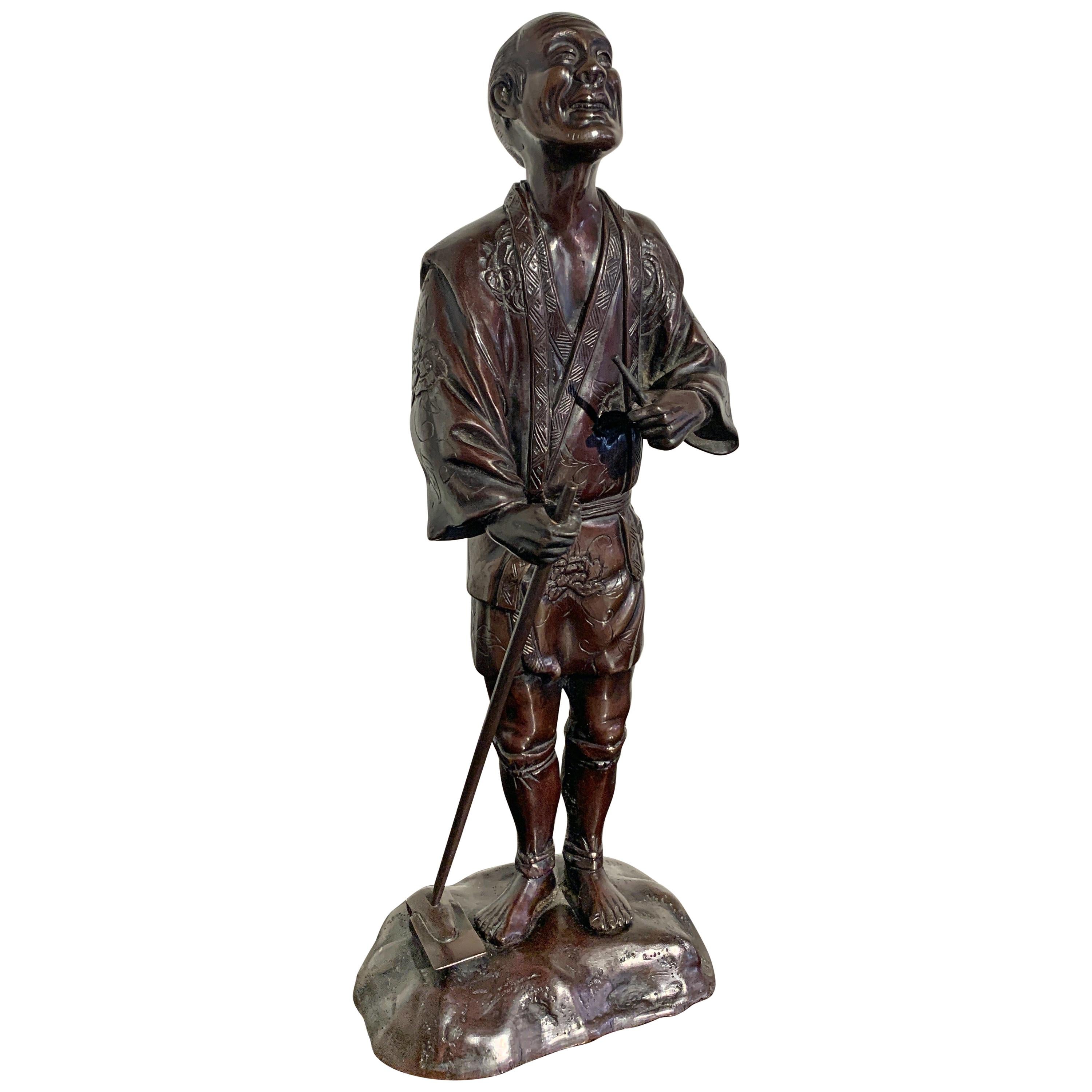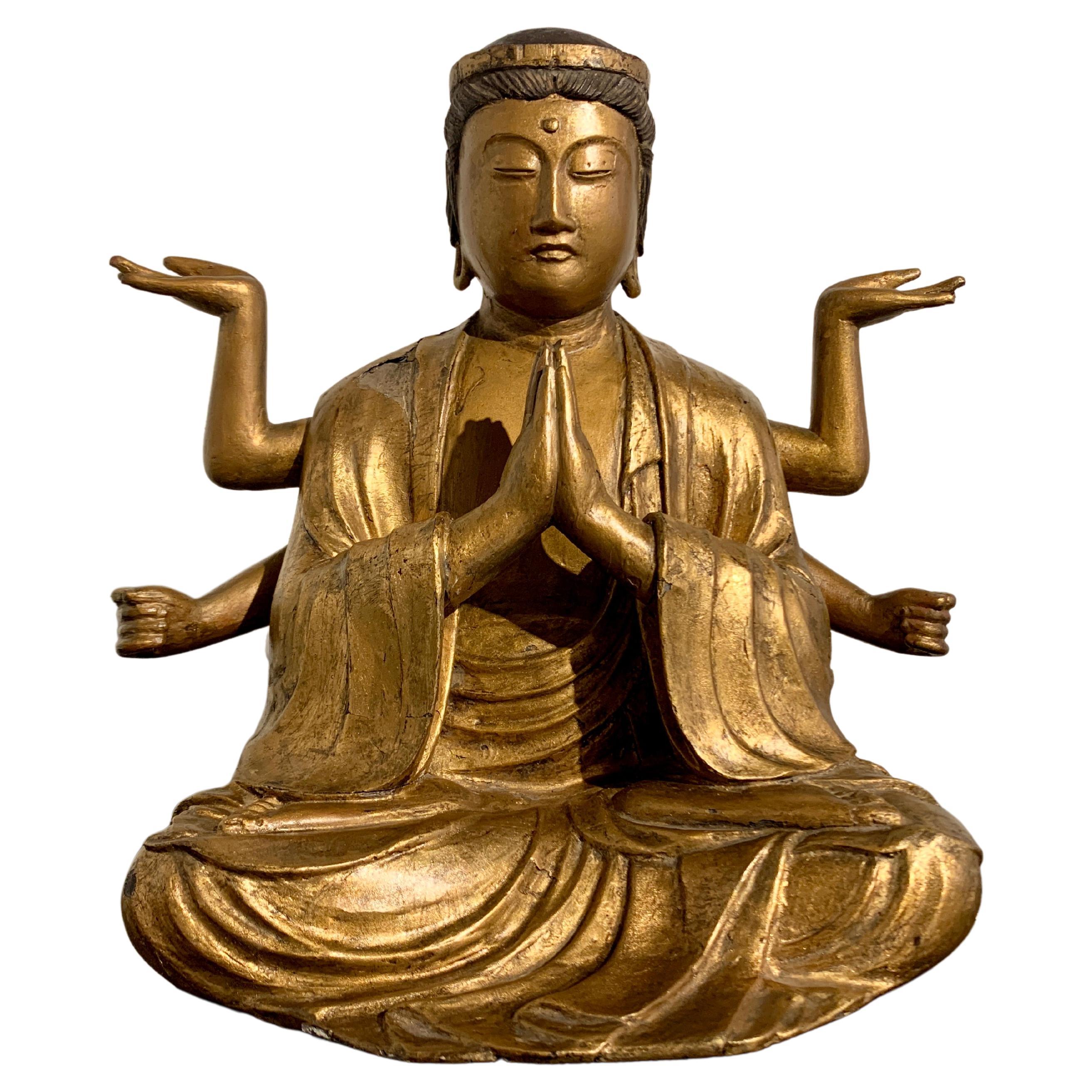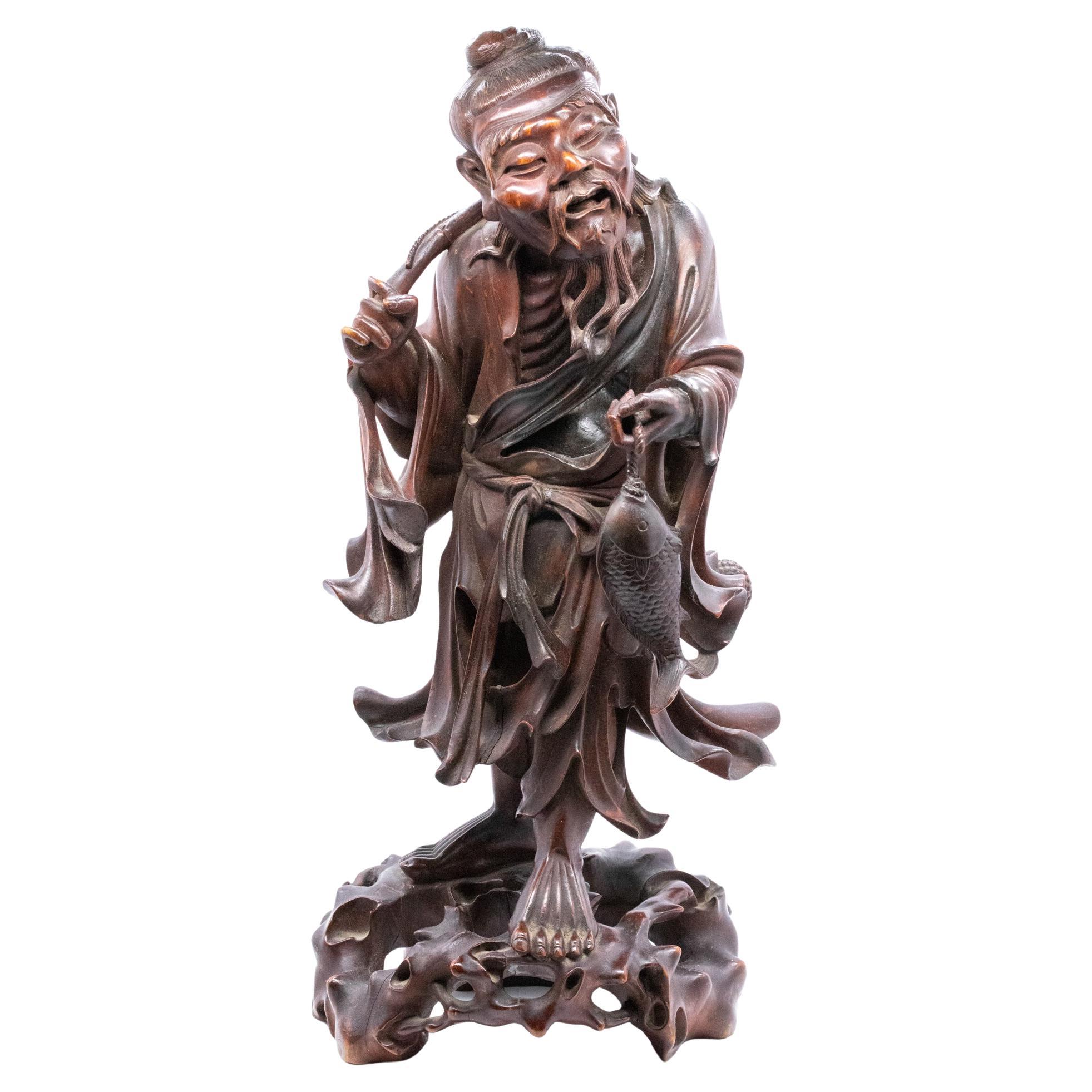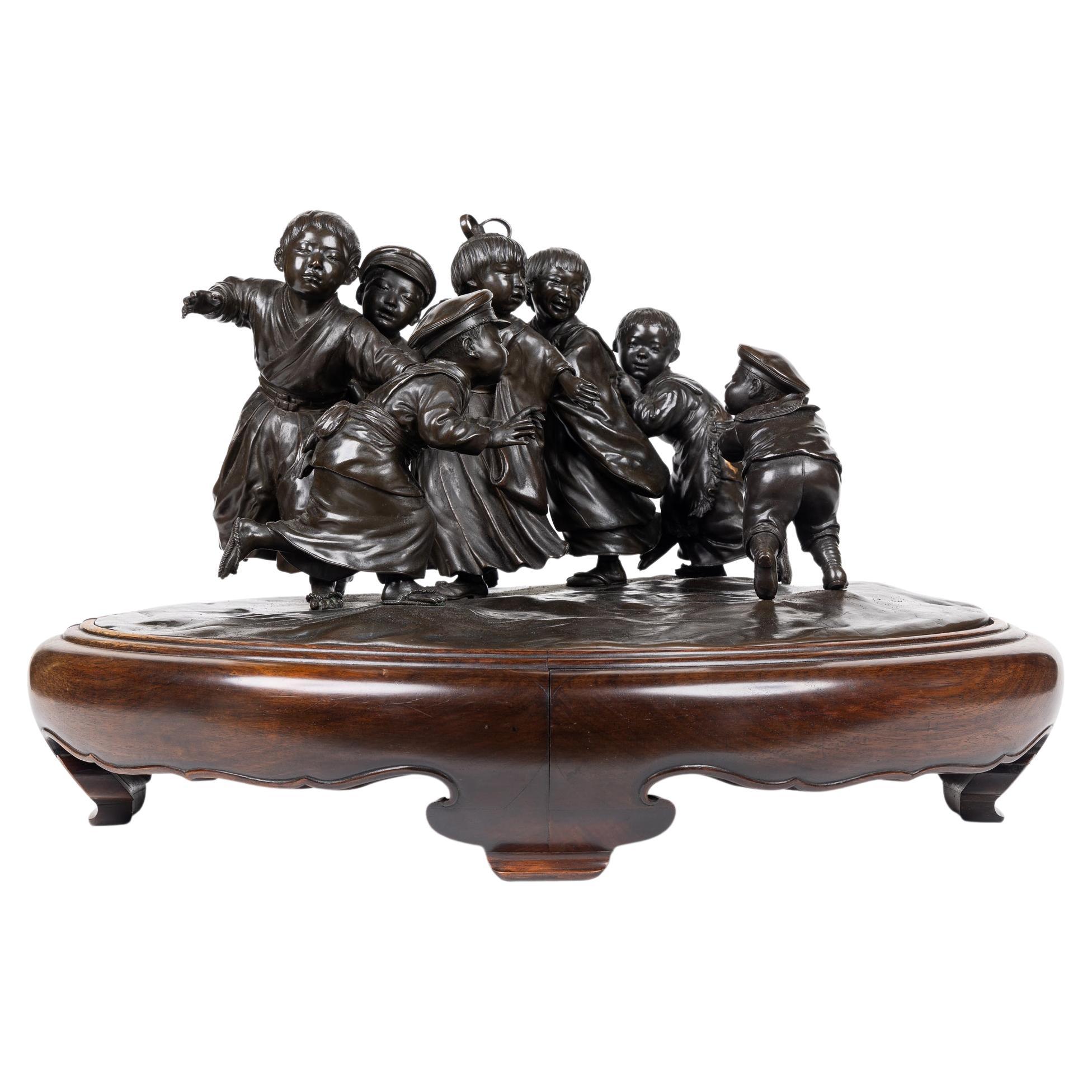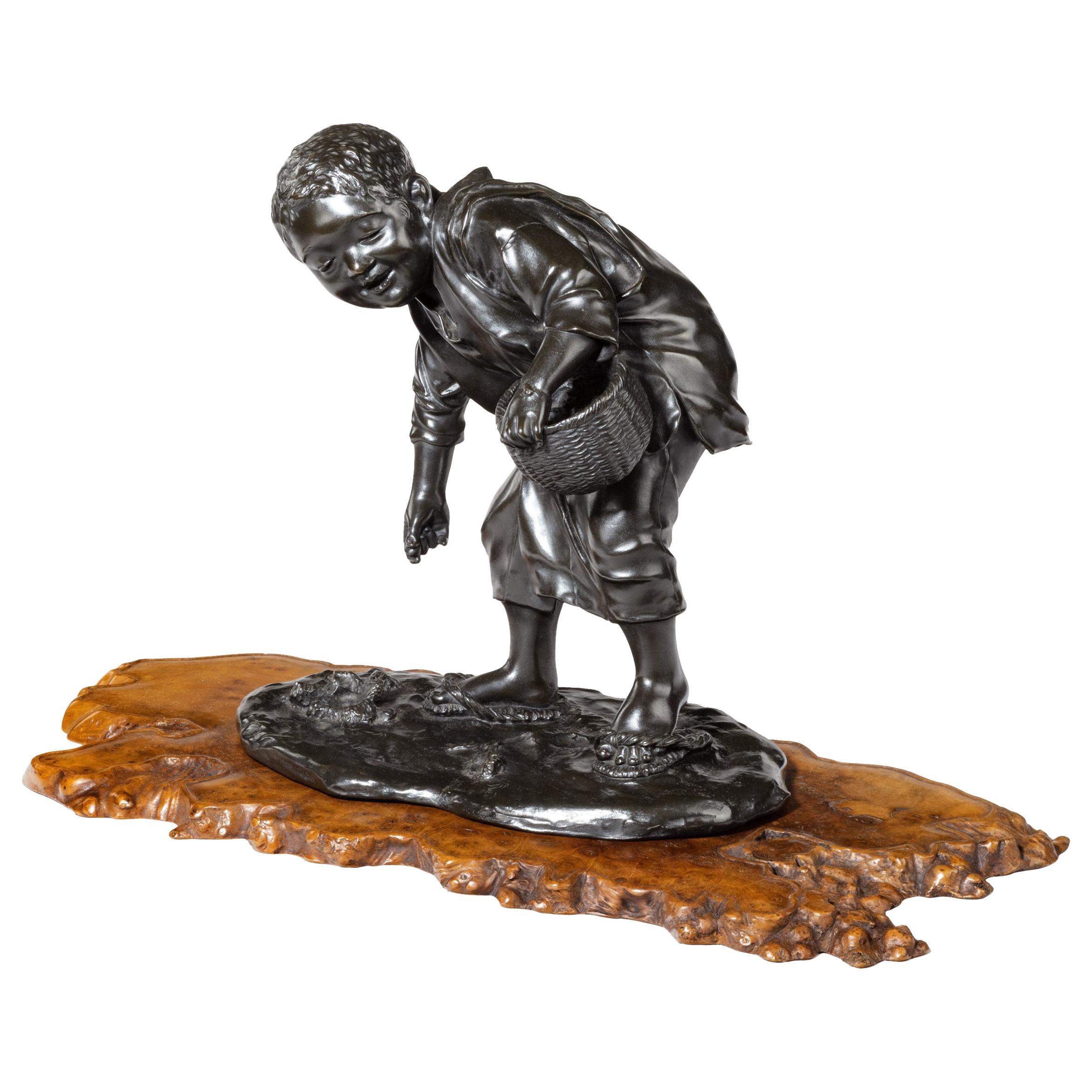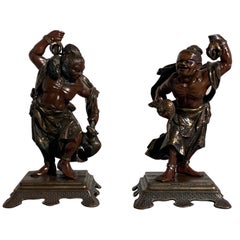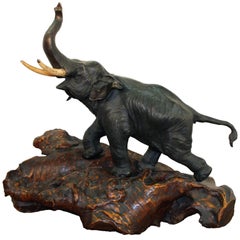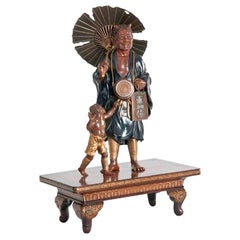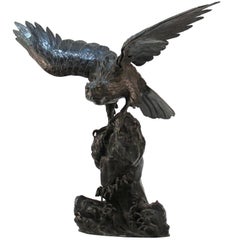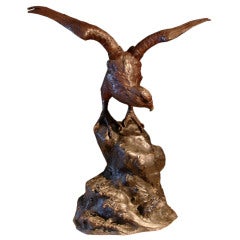
Japanese Meiji Period Bronze Sculpture of an Osprey
View Similar Items
Want more images or videos?
Request additional images or videos from the seller
1 of 7
Japanese Meiji Period Bronze Sculpture of an Osprey
About the Item
- Dimensions:Height: 16 in (40.64 cm)Width: 14 in (35.56 cm)Depth: 7 in (17.78 cm)
- Style:Meiji (Of the Period)
- Materials and Techniques:Bronze,Cast
- Place of Origin:
- Period:
- Date of Manufacture:1864-1912
- Condition:Very good; wings cast separately, now glued in place.
- Seller Location:Austin, TX
- Reference Number:1stDibs: U1206168947219
About the Seller
5.0
Platinum Seller
These expertly vetted sellers are 1stDibs' most experienced sellers and are rated highest by our customers.
Established in 2001
1stDibs seller since 2010
306 sales on 1stDibs
Typical response time: 1 hour
More From This SellerView All
- Japanese Tokyo School Bronze Okimono of a Farmer, Meiji PeriodLocated in Austin, TXA very fine and detailed Tokyo School cast bronze okimono (decorative sculpture) of a smiling farmer, Meiji period, late 19th century, Japan. The e...Category
Antique Late 19th Century Japanese Meiji Sculptures and Carvings
MaterialsBronze
- Pair of Japanese Gilt Bronze Komainu by Ishikawa Komei, Meiji PeriodLocated in Austin, TXA striking pair of Japanese gilt bronze komainu by the renowned Japanese sculptor, Ishikawa Komei (1852-1913), Meiji period, Japan. The pair well cast, and robustly modeled. They ar...Category
Antique Late 19th Century Japanese Meiji Sculptures and Carvings
MaterialsBronze
- Pair of Japanese Cast Bronze Figures of Niō, Meiji Period, Late 19th CenturyLocated in Austin, TXA well cast pair of Japanese mixed metal okimono figures of Buddhist guardians, known as Nio or Dharmapala, protectors of Buddhist faith, Meiji Period, Japan. The smiling bronze g...Category
Antique Late 19th Century Japanese Meiji Sculptures and Carvings
MaterialsBronze
- Japanese Gilt Wood Fukukenjaku Kannon, Meiji Period or Earlier, JapanLocated in Austin, TXAn attractive and esoteric Japanese carved and gilt wood figure of Fukukenjaku Kannon, Amoghapasa, Meiji period or earlier, Japan. Fukukenjaku Kannon is portrayed in an usual six...Category
Antique Early 1900s Japanese Meiji Sculptures and Carvings
MaterialsCypress
- Japanese Miyao Style Gilt Bronze Samurai Archer, Meiji Period, JapanBy Eisuke Miyao 1Located in Austin, TXA spectacular Japanese cast, carved, and parcel gilt bronze sculpture, okimono, of a kneeling samurai archer, signed Kiyotsugu (died 1894), Meiji ...Category
Antique Late 19th Century Japanese Meiji Sculptures and Carvings
MaterialsBronze
- Japanese Bronze Okimono of a Carp, Taisho Period, Early 20th Century, JapanLocated in Austin, TXAn elegant Japanese cast bronze okimono of a swimming carp, Taisho Period (1912 - 1926), early 20th century, Japan. The graceful fish portrayed realistically in motion, as if swimmi...Category
Vintage 1920s Japanese Taisho Sculptures and Carvings
MaterialsBronze
You May Also Like
- Japanese Meiji Period Bronze Elephant Sculpture on Burlwood BaseLocated in New York, NYA Japanese Meiji period bronze elephant sculpture on its original burl-wood base. Old repair to the tail; some paint chips to bronze trunk; unsigned.Category
Antique 1880s Japanese Meiji Animal Sculptures
MaterialsBronze
- Meiji Period Bronze of an Oni Holding a ParasolLocated in Lymington, HampshireThis figural group shows a mendicant Oni with a tattered umbrella and wearing a voluminous shakudo cloak over gilt tiger mask greaves. A smaller Oni wears s...Category
Antique 1890s Japanese Meiji Figurative Sculptures
MaterialsMetal
- Japanese Meiji Bronze Sea-Hawk SculptureLocated in New York, NYA finely-cast large Japanese Meiji-period bronze sculpture of a sea-hawk with stretched-out wings, made in the 1880s. The eyes are gilded; both wings and the body of the hawk are det...Category
Antique 1880s Japanese Meiji Sculptures and Carvings
MaterialsBronze
$10,000 Sale Price20% Off - Japanese Meiji Period Carved Wood Okimono Man with RabbitsLocated in Newark, EnglandThe charming figure, carved from a single piece of wood is exceptionally carved showing the male figure with humorous expression holding two Rabbits one by the ears and the second under his arm. A third Rabbit stands at the feet of the male looking up, each rabbit with a different expression. The male figure is wearing traditional Japanese attire with his hair tied back stood upon a naturalistic base. The figure dates to the Meiji Period (1868-1912) circa 1900. Notes The Rabbit is one of the 12 animals to feature in the Japanese Zodiac signs which follows the Chinese astrological system along with the Rat, Ox, Tiger, Rabbit, Dragon, Snake, Horse, Goat, Monkey, Rooster, Dog, Pig. Such division is connected with the Jupiter cycle around the Sun, which lasts about 12 years. As 2023 is the year of the Rabbit...Category
Antique Early 1900s Japanese Meiji Sculptures and Carvings
MaterialsWood
- Two Rare Japanese Izumo Clay Dolls of Emperor and Tenjin, Meiji PeriodLocated in Ottawa, OntarioTwo rare Japanese Izumo clay dolls of Emperor and Tenjin, Nara Prefecture, Meiji period. Material and simple execution impart a flavor of antiquity and great decorative power. Empero...Category
Antique Late 19th Century Japanese Meiji Sculptures and Carvings
MaterialsClay
- Japan 1890 Meiji Period Ebisu Sculpture in Wood Carving of an Old FishermanLocated in Miami, FLAn extremely well detailed wood carving of Ebisu, as a fisherman. Beautiful and well detailed sculpture, created in Japan during the Meiji dynastic period (1868-1912) back in the 1890's. This piece represent the god of good fortune Ebisu. Was exceptionally carved and executed from one solid single piece of rose wood, showing a gorgeous face expression, with intricate details in the hands and feets, he's carrying as usual a rod and a fish. Ebisu (yebisu), ???, god of fortune, the ocean and fisherman. In the japanese mythology is one of the seven gods of luck, sichi-fuku-jin, the patron of the fisherman and tradesmen. he is depicted as a bearded, smiling fisherman with formal long court ropes, often carrying a rod in one hand and a tai, symbolic fish of the good luck, in the other. The height is 14.25 inches (36.20 cm) and the base measurements is 6.5 by 6.45 inches (16.5 x 16.38 cm). Meiji period, is an era of Japanese history that extended from October 23, 1868 to July 30, 1912.The Meiji era was the first half of the Empire of Japan, when the Japanese people moved from being an isolated feudal society at risk of colonization by Western powers to the new paradigm of a modern, industrialized nation state and emergent great power, influenced by Western scientific, technological, philosophical, political, legal, and aesthetic ideas. As a result of such wholesale adoption of radically different ideas, the changes to Japan were profound, and affected its social structure, internal politics, economy, military, and foreign...Category
Antique 1890s Japanese Meiji Sculptures and Carvings
MaterialsWood
$1,320 Sale Price20% Off
Recently Viewed
View AllMore Ways To Browse
Japanese Wave Sculpture
Bird Of Prey Sculpture
Hawk Sculpture
Art Osprey
Bronze Hawk
Bronze Sculpture Hawk
Bronze Birds Of Prey Sculptures
Meiji Hawk
Japanese Bronze Hawk
Hand Carved Buddha Sculpture
Vintage Japanese Ornaments
Hand Carved Sculptures Stone China
Outdoor Iron Art
Chinese Stone Lantern
Large Water Basin
Japanese Metal Sculpture
Finial Japan
Chinese Display Stand
